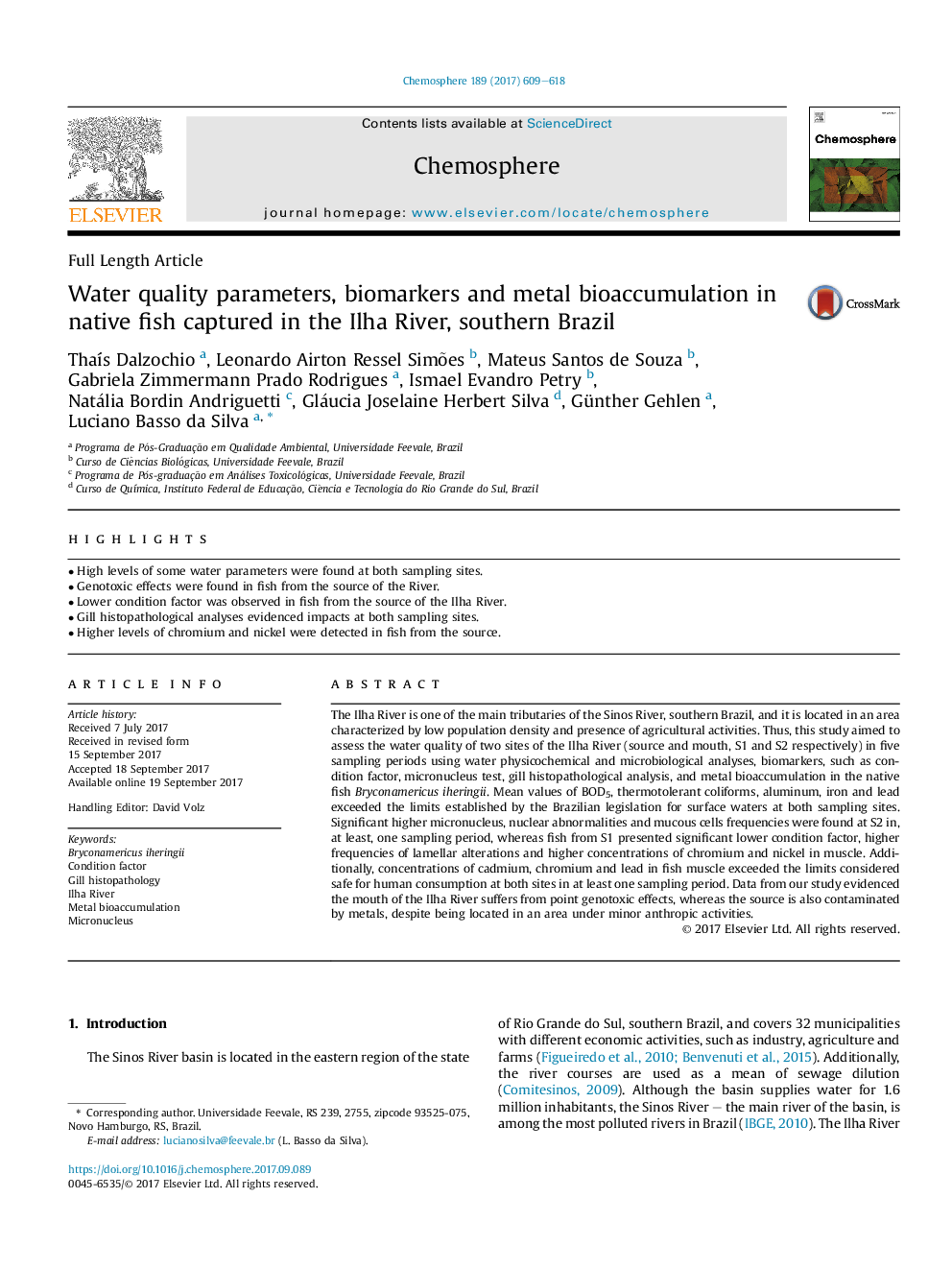| Article ID | Journal | Published Year | Pages | File Type |
|---|---|---|---|---|
| 5745896 | Chemosphere | 2017 | 10 Pages |
â¢High levels of some water parameters were found at both sampling sites.â¢Genotoxic effects were found in fish from the source of the River.â¢Lower condition factor was observed in fish from the source of the Ilha River.â¢Gill histopathological analyses evidenced impacts at both sampling sites.â¢Higher levels of chromium and nickel were detected in fish from the source.
The Ilha River is one of the main tributaries of the Sinos River, southern Brazil, and it is located in an area characterized by low population density and presence of agricultural activities. Thus, this study aimed to assess the water quality of two sites of the Ilha River (source and mouth, S1 and S2 respectively) in five sampling periods using water physicochemical and microbiological analyses, biomarkers, such as condition factor, micronucleus test, gill histopathological analysis, and metal bioaccumulation in the native fish Bryconamericus iheringii. Mean values of BOD5, thermotolerant coliforms, aluminum, iron and lead exceeded the limits established by the Brazilian legislation for surface waters at both sampling sites. Significant higher micronucleus, nuclear abnormalities and mucous cells frequencies were found at S2 in, at least, one sampling period, whereas fish from S1 presented significant lower condition factor, higher frequencies of lamellar alterations and higher concentrations of chromium and nickel in muscle. Additionally, concentrations of cadmium, chromium and lead in fish muscle exceeded the limits considered safe for human consumption at both sites in at least one sampling period. Data from our study evidenced the mouth of the Ilha River suffers from point genotoxic effects, whereas the source is also contaminated by metals, despite being located in an area under minor anthropic activities.
